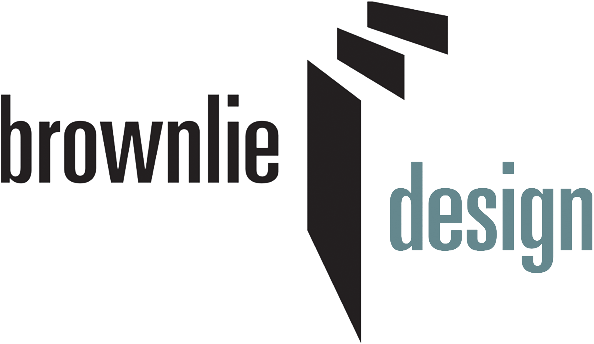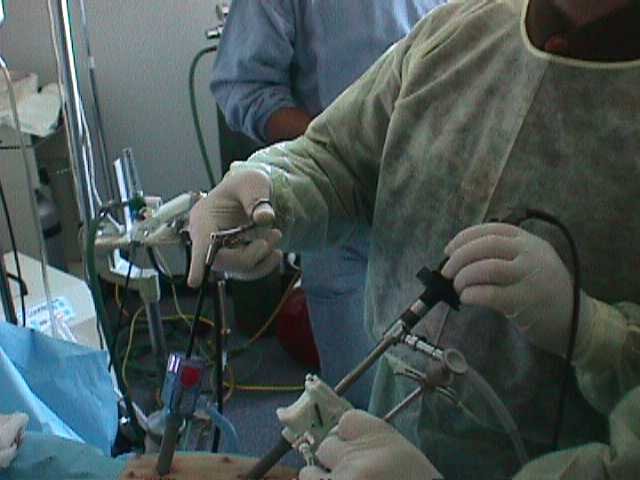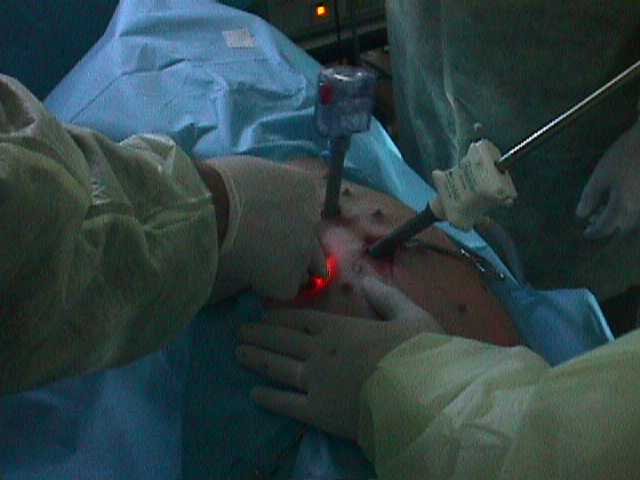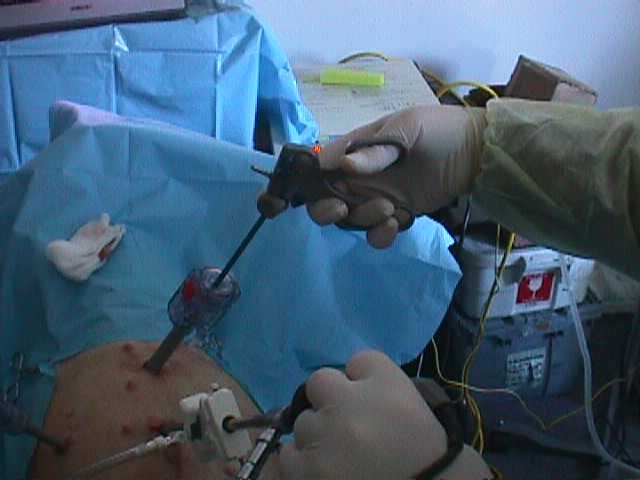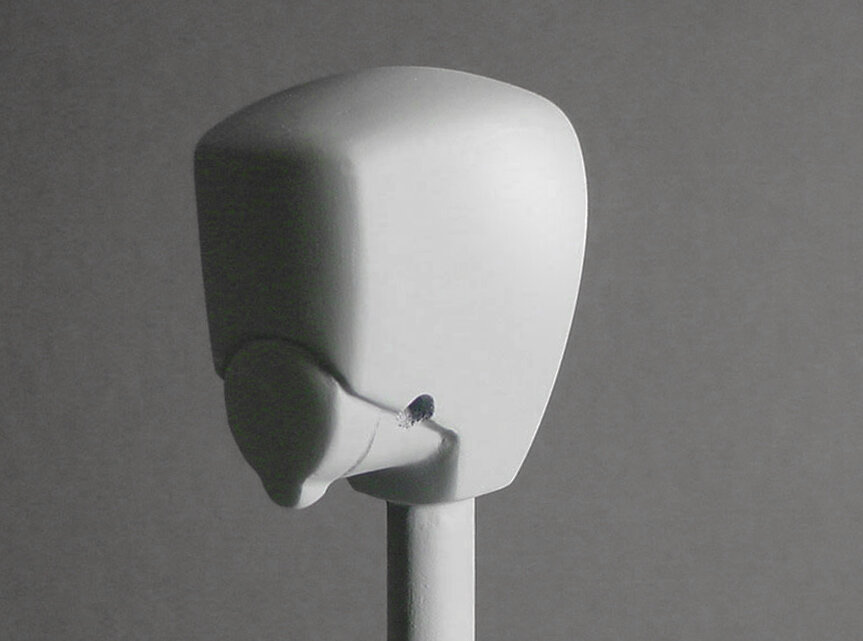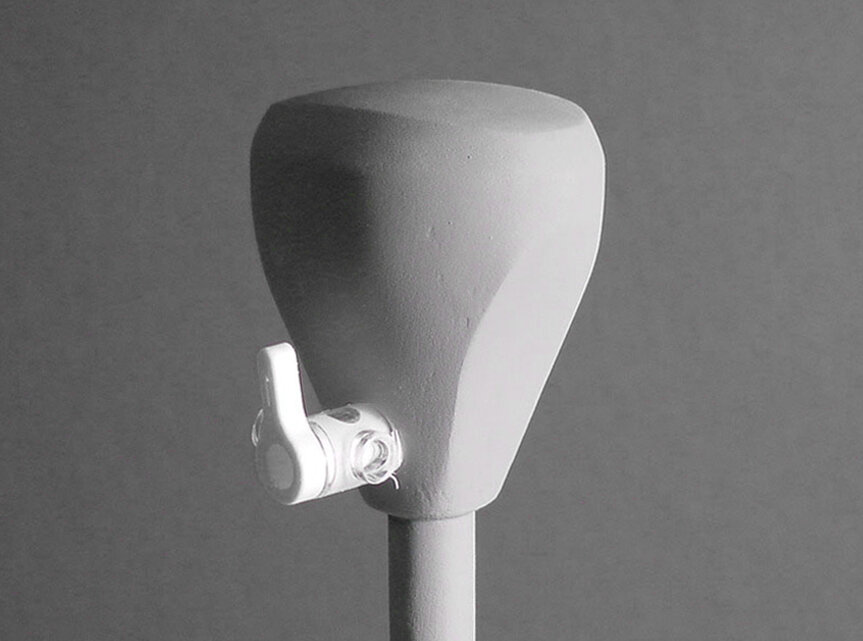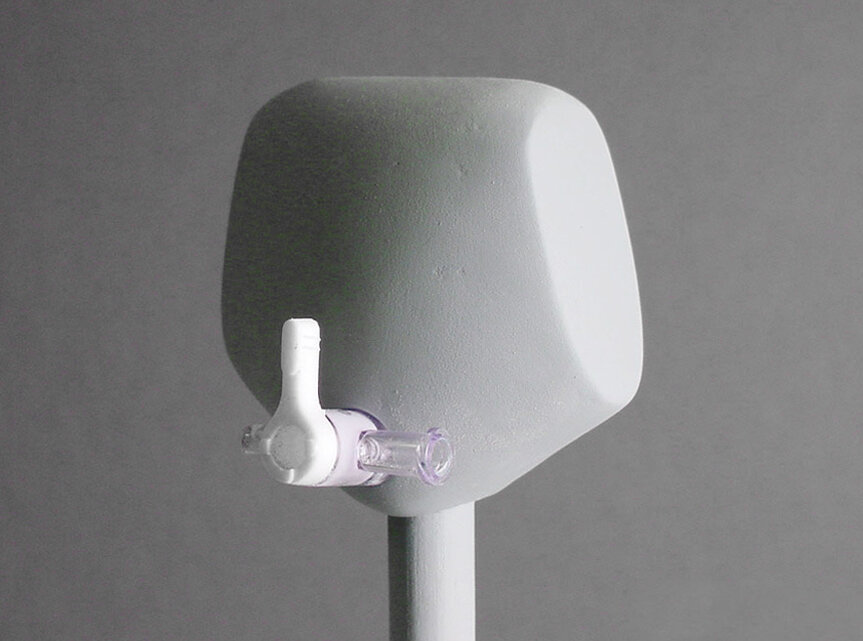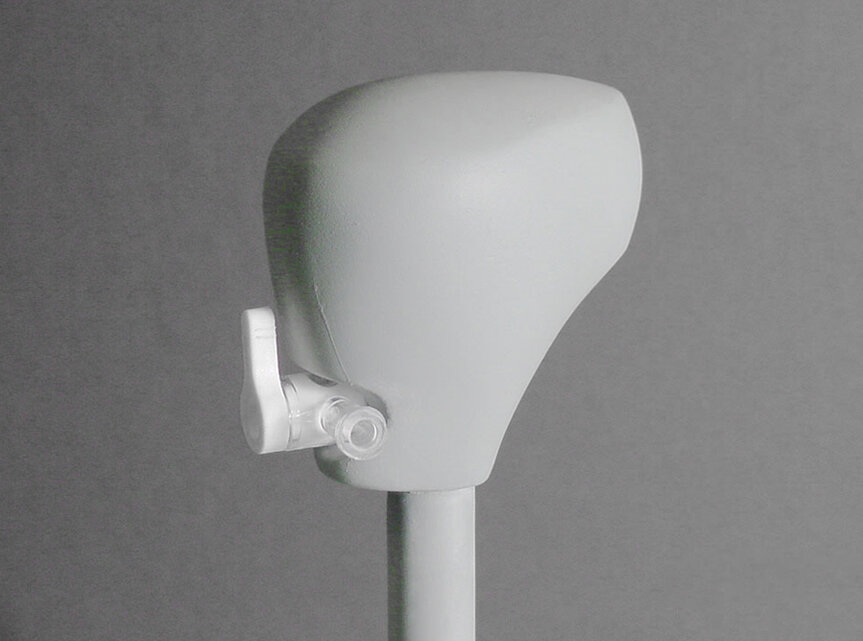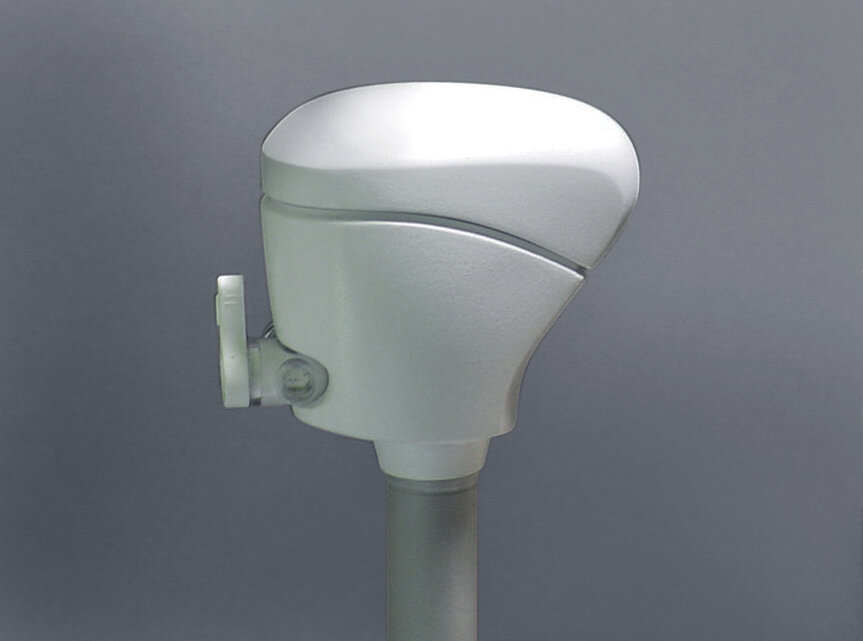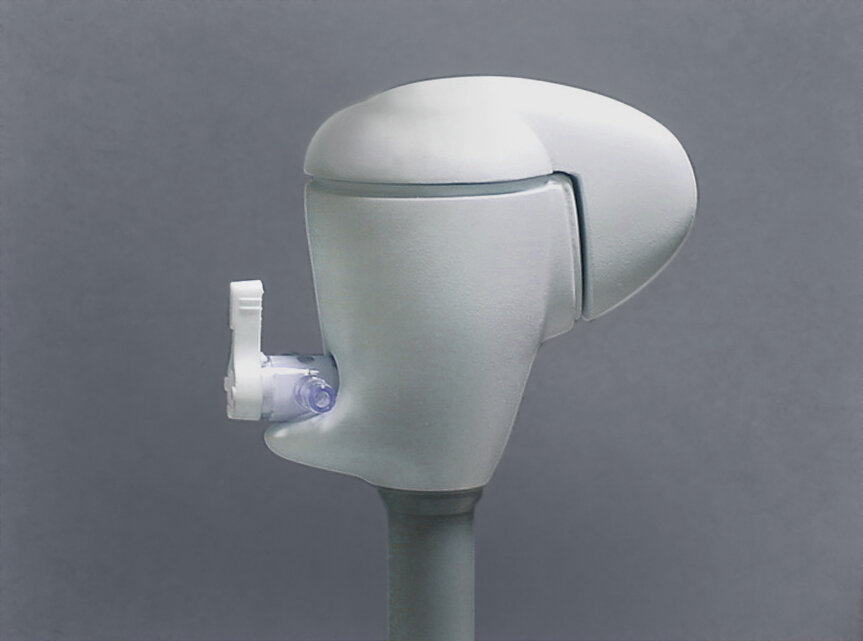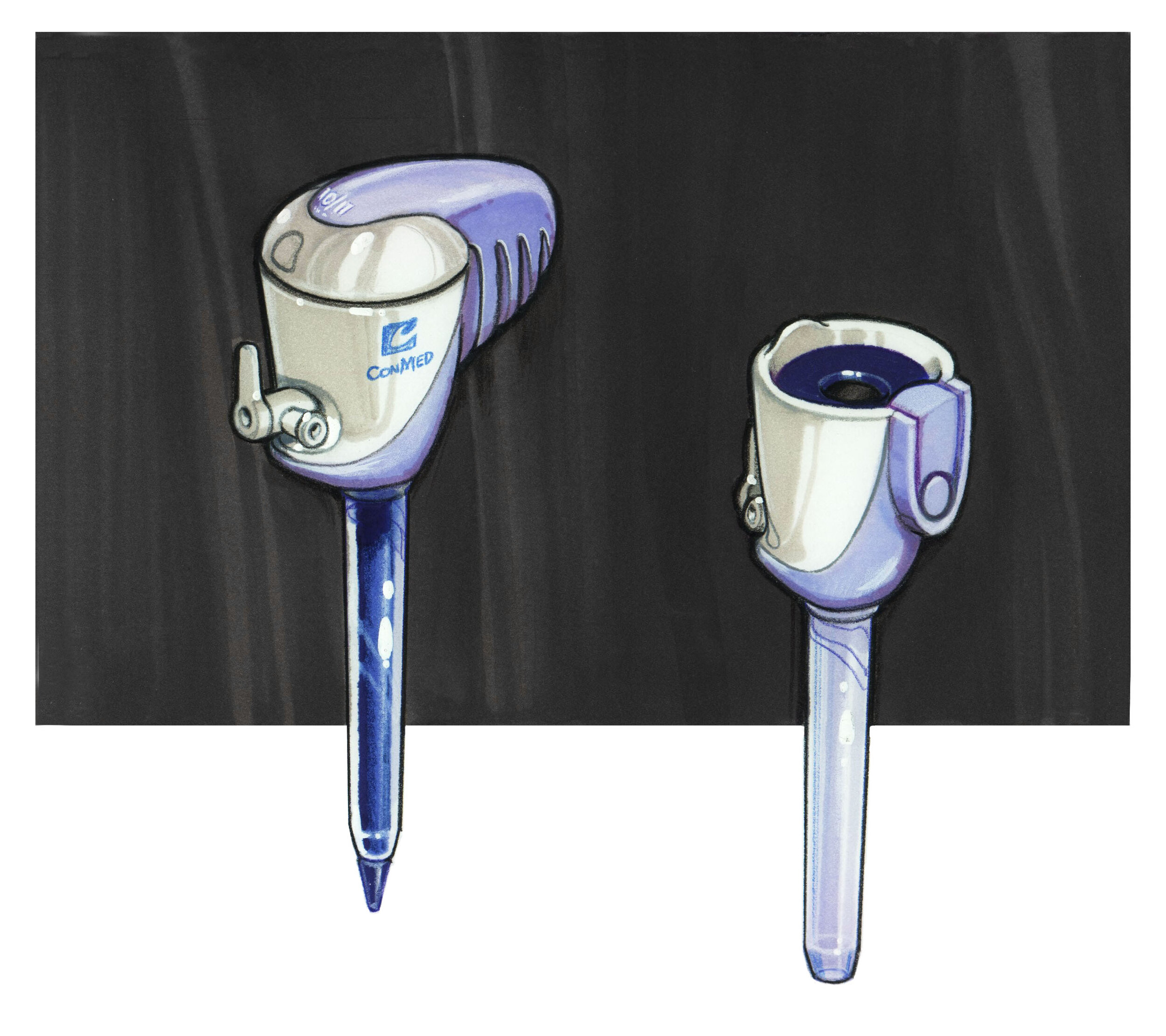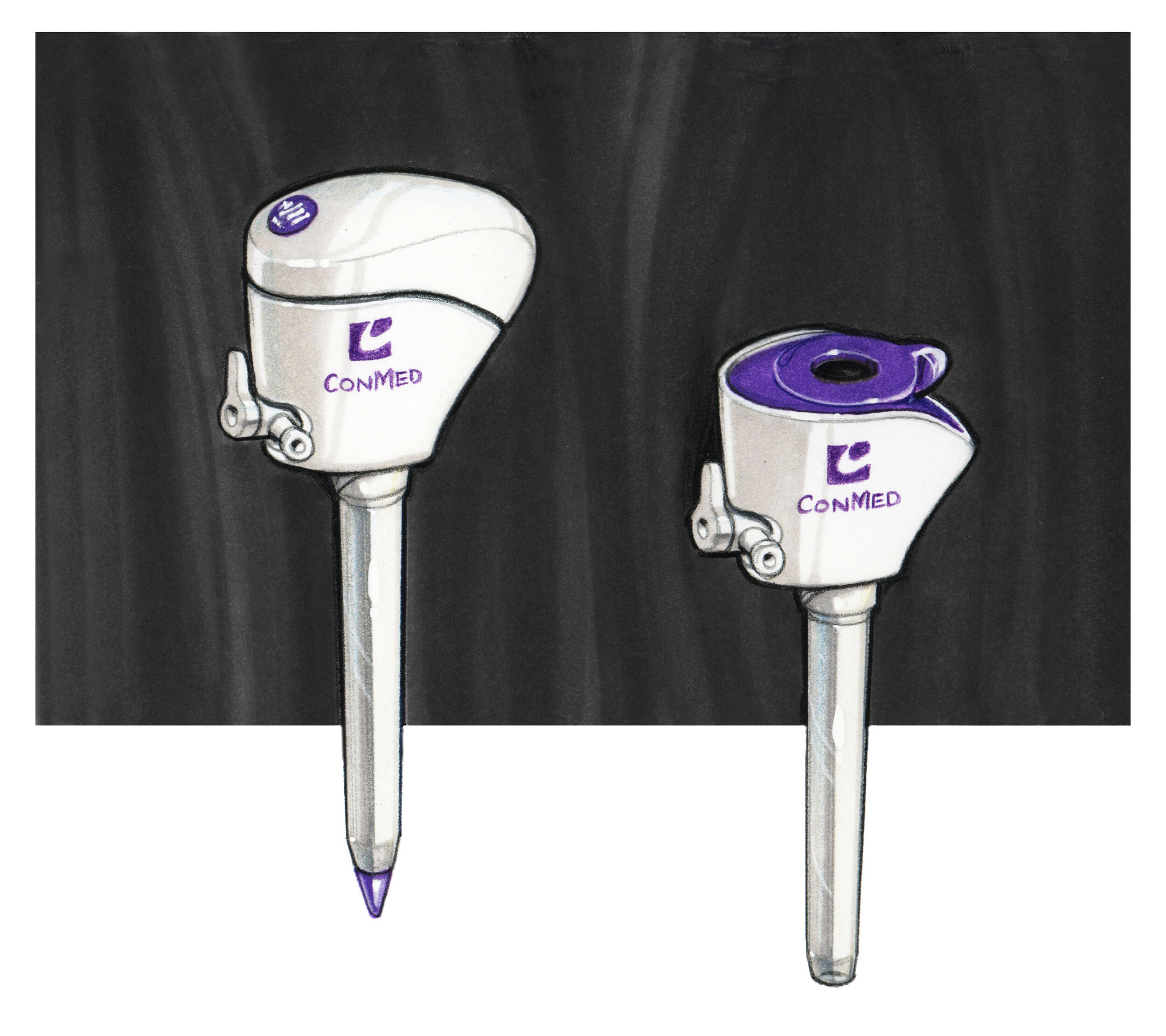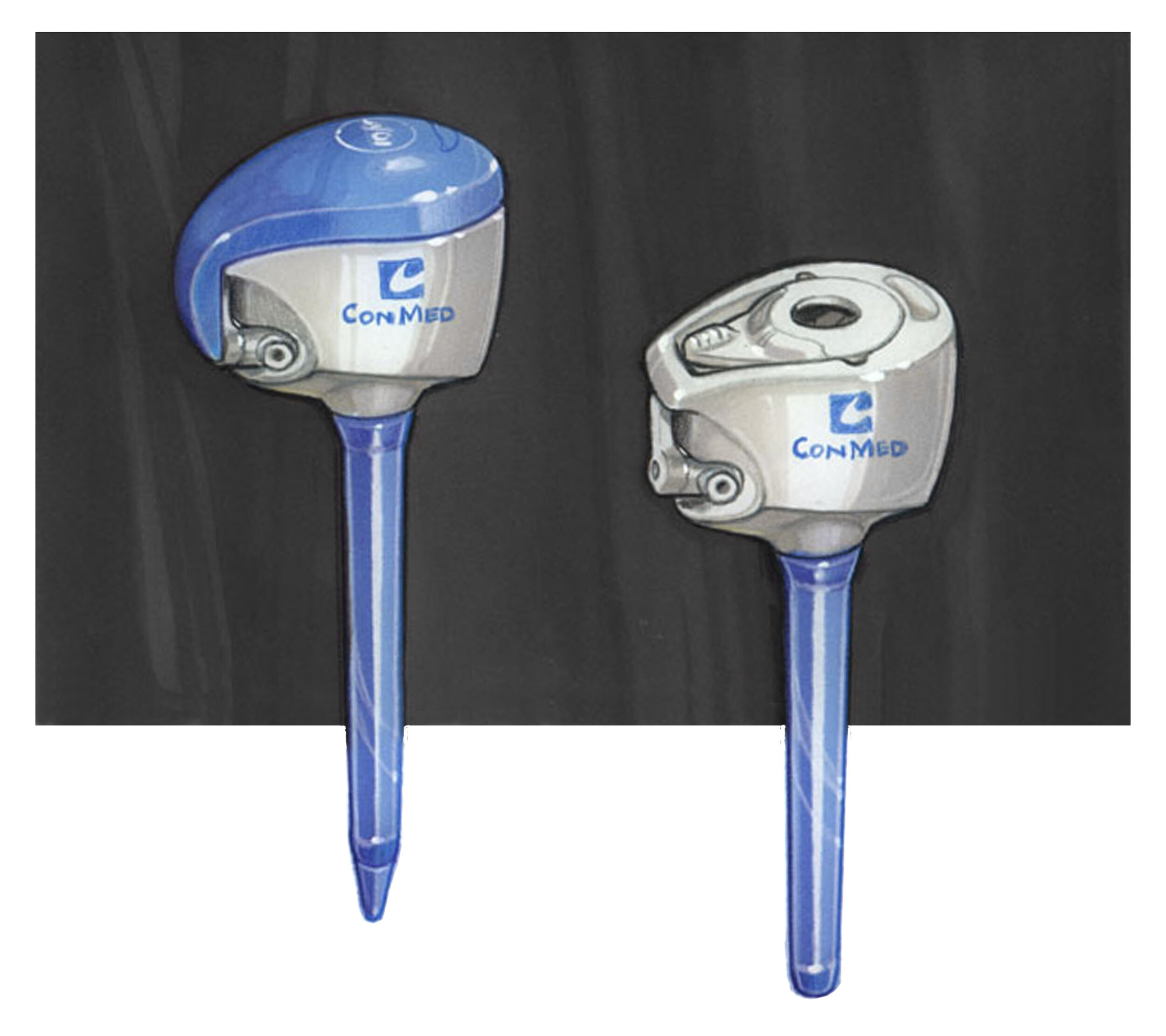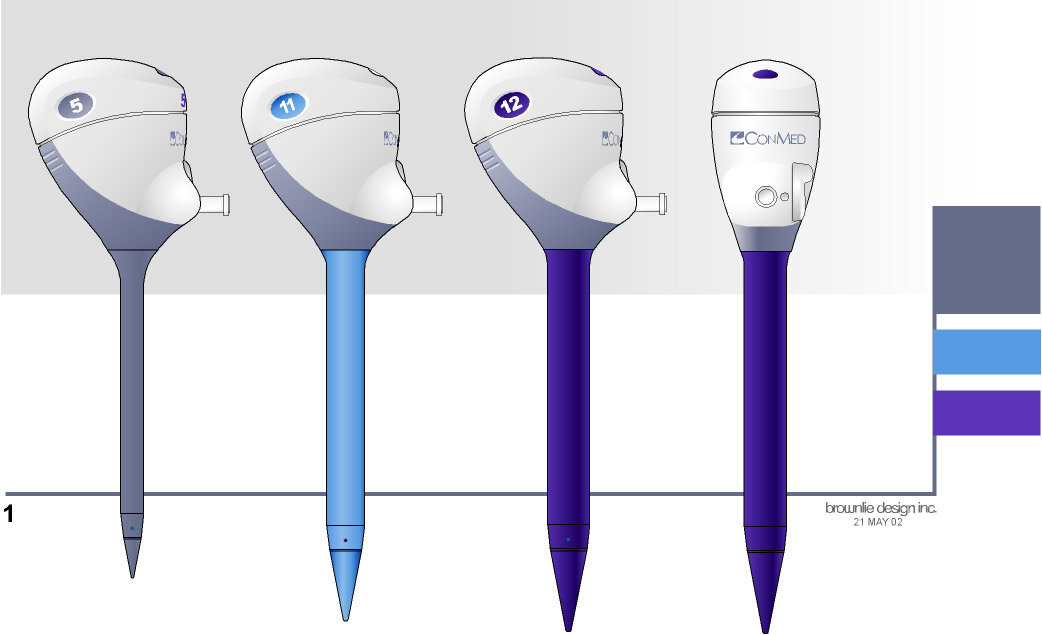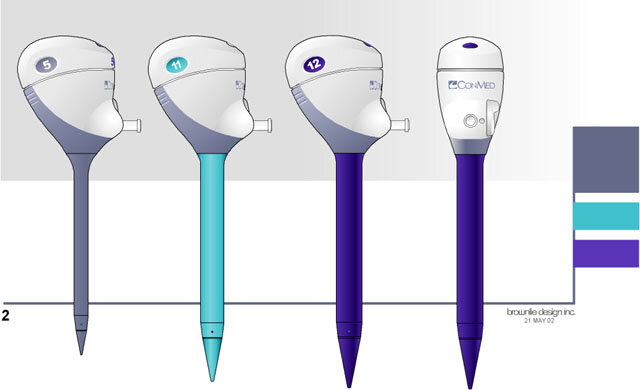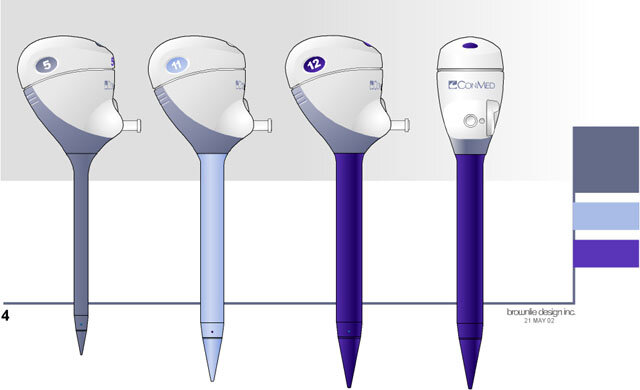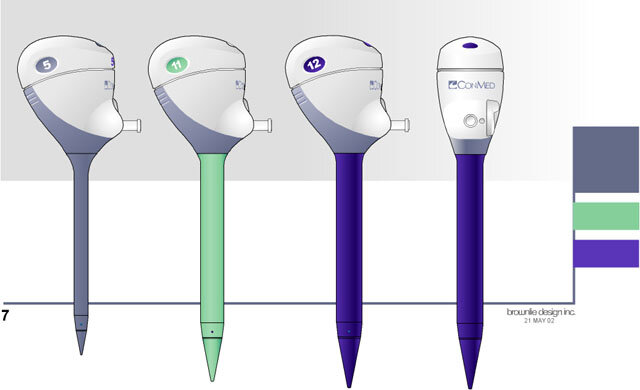CLIENT
ConMed
MISSION
Redesign the trocar, the entry port for laparoscopic surgery, to give surgeons maximum control and comfort and to reduce the risk of errors in insertion.
CONCEPT DESIGN
ERGONOMICS
APPEARANCE MODELS
3D CAD
PROTOTYPES
PRODUCTION DESIGN
RESEARCH
Brownlie Design interviewed surgeons and attended pig lab demonstrations to understand the details of trocar usage. This was followed by a study of current products to analyze grip security; hand fatigue; and stability and control in deploying the trocar, removing the core, inserting laparoscopic instruments, and attaching tubing.
CONCEPT DESIGN
Because of the critical importance of ergonomics for this product, we began the design process with quick sketches to develop form study models. These were based on the mechanics that needed to be housed in the instrument but driven by our research. The trocars needed to be comfortable to press against and secure to grip and manipulate, while also being as unobtrusive in the surgical field as possible. We created full-size models and paired them with renderings for ergonomic and aesthetic evaluation. These showed the functional detailing, colors, textures, and overmolding. In addition, we provided a brand identity study to demonstrate the look across the product line.
CONCEPT REFINEMENT
After reviewing the concepts with surgeons, the team decided to pursue an asymmetrical design. This concept was functional in either the left or right hand, provided better support for the palm, and had good rotational control. It was also a distinct departure from competitors’ trocars and immediately recognizable as an ergonomically thoughtful product. Renderings were created to show the appearance of the trocar before and after insertion, with overmolding placed for grip and aesthetic impact.
APPEARANCE MODEL
The process for removing the dilator was a key element in the selection of this design. Instead of using a pulling motion, the top rotates and overcomes the retention force with a camming action. This allows the surgeon to hold the trocar steady and reduces the risk of patient injury.
As construction solutions were developed, the aesthetics and moldability were refined, resulting in a sleek, low-profile form that would fit comfortably in the surgeon’s hand. An appearance model was created to capture the final design intent for key stakeholder approval
DETAIL DESIGN
The process for removing the dilator was a key element in the selection of this design. Instead of using a pulling motion, the top rotates and overcomes the retention force with a camming action. This allows the surgeon to hold the trocar steady and reduces the risk of patient injury.
As construction solutions were developed, the aesthetics and moldability were refined, resulting in a sleek, low-profile form that would fit comfortably in the surgeon’s hand. An appearance model was created to capture the final design intent for key stakeholder approval.
PROTOTYPE
The final files we created for the OnePort trocar were used to build a working model suitable for performance testing and manufacturability evaluation. Features that are critical to product function were identified for mold design, production, and inspection.
The OnePort trocar is a highly successful integration of function and aesthetics to create a product that provides the surgeon with superior comfort and control.
